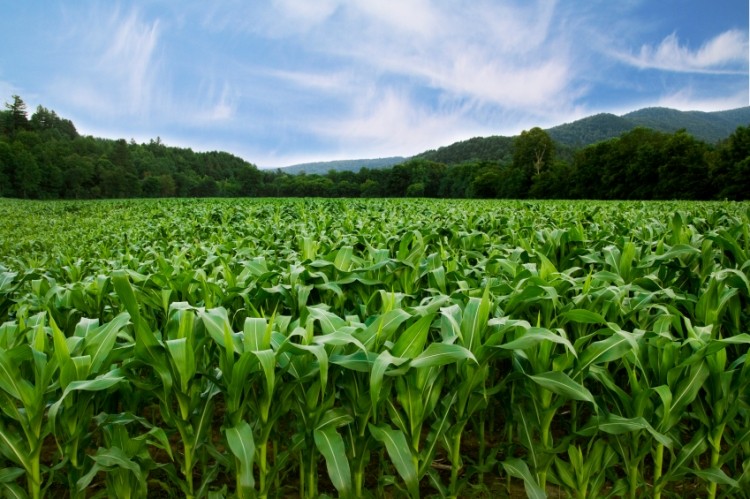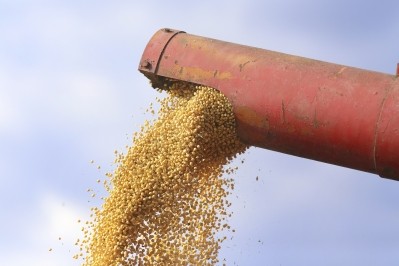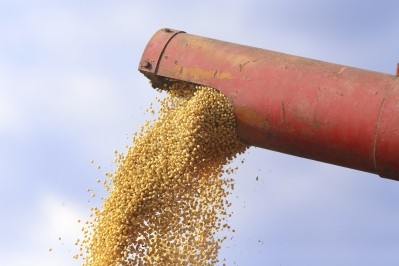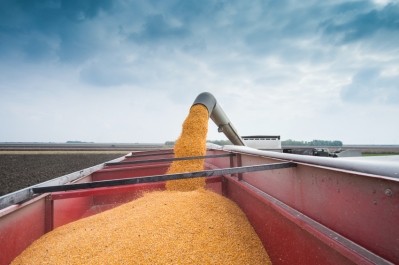US feed crop price woes to continue with strong yields, good weather

“We’ve been trying to kill this crop for several months,” said Ed Usset, grain marketing specialist and research fellow at the University of Minnesota. “We were anticipating the La Nina of the decade and that will kill the crop, and that didn’t happen – crop conditions are right up there with some of the better conditions we’ve had.”
Yield and ending stocks for US wheat and corn are expected to increase, even as corn and soybean exports expand, said the US Department of Agriculture (USDA) in the July World Agricultural Supply and Demand Estimate report released Tuesday.
Corn and wheat prices are predicted to drop, said the USDA. However, soybean prices stay steady as meal prices are predicted to increase.
The market did not have a sharp reaction to the report, but prices could go down if the current conditions continue, Usset told FeedNavigator. “It’s the middle of the growing season and people with interest in the markets, they’re looking at the two-to four-week weather report,” he added.
However, it is unlikely that next year would see a reduction in crop planting, he said. But there could be a move to replace some corn acres with soybeans.
Corn and soy
Total feed grain supplies for 2016-17 have been increased for the US, said the USDA. Corn beginning stocks have been lowered 7m bushels as a bump in exports and seed use offset less feed and residual use in 2015-16.
Corn production for 2016-17 has been raised by 110m bushels based on planting and harvested areas, said the agency.
Corn use in 2016-17 is expected to be up by about 30m bushels even as less feed use is anticipated, the agency said. Exports also have been raised with less competition coming from Brazil.
Corn ending stocks are estimated to increase by 73m bushels for 2016-17, the agency said.
“Projected season average prices received by producers for 2016-17 are lowered for all the feed grains, with corn down $0.10 to $3.10 to $3.70 per bushel,” the agency said. “For 2015-6 the corn price is lowered 5 cents at the midpoint to a range of $3.60 to $3.70 per bushel.”
US soybean production is set for 3,880m bushels, up 80m bushels from an increase in harvested acres, the agency said. That acreage is expected to be a record 83m acres, about 1.6m acres more than the June forecast.
“The US season-average soybean price for 2016-17 is projected at $8.75 to $10.25 per bushel, unchanged from last month,” said the USDA. “The soybean meal price is projected at $325 to $365 per short ton, up $5 on both ends.”
Soybean yield is anticipated to be 46.7 bushels an acre, said the agency. Supplies have been increased by about 60m bushels as lower beginning stocks act to offset the growth in production.
Both crush and exports have been increased, the agency said. Beginning stocks for 2016-17 have been increased by 290m bushels, an bump from last month.
Exports for the 2015-16 season also have increased, and are expected to be up 35m bushels to about 1.8bn bushels, the agency said. Ending stocks for 2015-16 are down 20m bushels.
Both corn and soybean exports were the most positive aspect of the WASDE report, Usset said. However, there could again be some challenges in finding storage for the domestic crop.
Other crops
US wheat however is a sad story this year, Usset said. Planted acres are the lowest they have been in many years.
“I don’t know how far we’d have to go back to get to the same planted acres and we got a record yield,” he said. “It’s over 51.3 bushels an acre, that’s four bushels better than the previous record.”
The USDA is predicting a large upswing in wheat feeding, he said. But in the US that can be more dictated by feed quality than price alone.
US wheat supplies in 2016-17 have been increased by 180m bushels from production and higher beginning stocks, the agency said. Winter wheat yields are expected to be record high and spring wheat above average.
“Feed and residual use for 2016-17 is raised 100m bushels to 300m on the larger supplies and increased wheat price competitiveness with corn,” the agency said. “US exports are raised 25m bushels to 925m, which would be the highest in 3 years.”
Projected ending stocks have been increased by 55m bushels, and the season-average farm price has been lowered by $0.20 per bushel at the midpoint, leaving a range of $3.40-$4.20, the agency said.
Sorghum production for 2016/17 is estimated to increase by 13m bushels from increased area being harvested, the USDA said. Oat production also is expected to be up by about 9m bushels, while barley production is thought to be down 10m bushels.
Global picture
On a global scale, oilseed production is expected to grow in 2016-17 with amounts reaching 536.4m tons, the USDA said. US soybean production is attributed for much of the growth, but Canada also has increased soybean production.
Oilseed ending stocks for 2016-17 are anticipated to be 76.1m tons, the agency said.
Global coarse grain supplies for 2016-17 are expected to drop slightly, the USDA reported. Beginning stocks are down based on barley in the EU and corn in Brazil, even as larger corn stocks are anticipated from China and Mexico.
Corn production for Brazil in 2015-16 and 2016-17 has been lowered based on yield, the agency said. Canada’s corn crop for 2016-17 also has been shrunk following a dry June.
“Global 2016/17 coarse grain consumption is lowered 3.3m tons, mostly reflecting reduced corn feeding for the United States, Brazil, China, EU, South Korea, and Indonesia,” the agency said. “Larger global supplies of feed-quality wheat are expected to undercut corn in price sensitive markets in the EU and Asia.”
Global wheat supplies for 2016-17 have been increased to 983m tons from production and larger beginning stocks, the agency said. Usage also is expected to grow, mostly for feed use, and exports have been raised.










